Speed limits
Speeding is the number one killer on NSW roads. Following these rules will help keep you, and others, safe on our roads.
The rules
Speed limits
On roads where there’s a speed limit sign, you must not drive faster than that speed limit.
On roads where there’s no speed limit sign, you must not drive faster than the default speed limit:
- 50km/h in ‘built-up areas’ – areas with street lights and buildings next to the road less than 100m apart
- 100 km/h for all other roads.
Licence restrictions
You must not drive faster than the maximum speed allowed by your driver licence, even when a speed limit sign is higher.
| Driver licence | Maximum speed |
|---|---|
| Learner | 90km/h |
| Provisional P1 | 90km/h |
| Provisional P2 | 100km/h |
Heavy vehicles over 4.5 tonnes (GVM). This includes LR, MR, HR, HC, MC licence classes. | 100km/h |
Radar detectors and jammers
It’s illegal to have a radar detector or jammer in your vehicle.
A radar detector or jammer is anything that detects, interferes with or reduces the effectiveness of speed-measuring devices.
Penalties
Penalties for speeding include:
- fines
- demerit points (including double demerit points)
- loss of licence
- taking away your vehicle or number plates.
The penalty increases the more you’re over the speed limit, and if you speed in school zones.
Learner and provisional P1 drivers will go over their demerit point limit for any speeding offence and their licence will be suspended.
See Speeding penalties.
Speed limit signs
Speed limit signs show you the maximum speed you can drive in good conditions. Slow down in poor conditions.
Regulatory speed signs
You must not drive faster than 50km/h. Regulatory speed limit signs have a white background with the speed limit in a red circle. You must not drive faster than the speed limit shown on the sign.
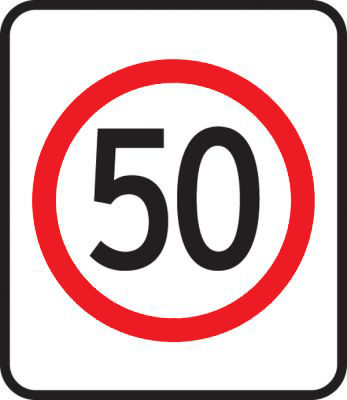
Variable speed limit signs
These are electronic signs placed in tunnels and on motorways and bridges where the speed limit changes based on the road conditions. You must not go faster than the speed limit shown on the sign.
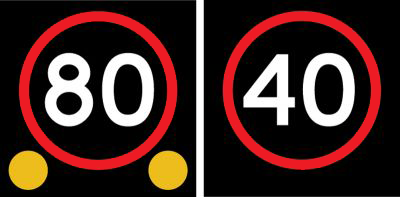
Local traffic areas
A local traffic area is an area of local streets with a speed limit of 40km/h.
The lower speed limit means greater safety for all road users and more peace and quiet for people living in the area.
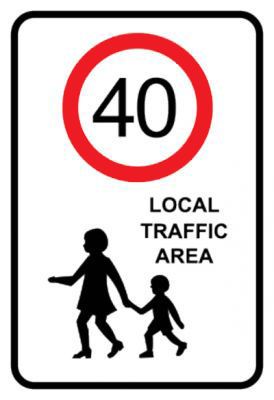
High pedestrian activity areas
High pedestrian activity areas have a speed limit of 30km/h or 40km/h.
This lower speed limit improves safety in areas with high levels of pedestrian activity, such as busy central business district zones and small suburban shopping strips.
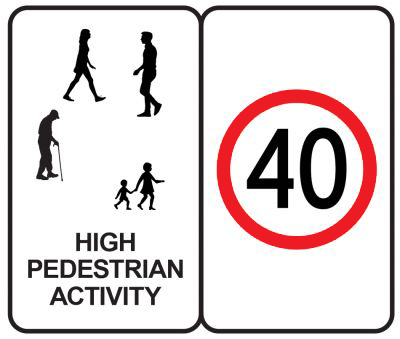
Shared zone
A shared zone is where pedestrians, bicycles and other vehicles can share the road safely.
Shared zones have a speed limit of 10km/h. You must not drive faster than this speed limit. You must also give way to any pedestrian in a shared zone. This includes slowing down and stopping, if necessary, to avoid them.

School zone
A school zone is the area around a school between a ‘School zone’ sign and an ‘End school zone’ sign.
You must not drive faster than the speed limit in a school zone on school days during the times shown on the sign. School days are published by the NSW Department of Education.
Every school has at least one set of flashing lights, which operate during school zones times. ‘Dragon’s teeth’ are also painted on the road to make school zones more visible.
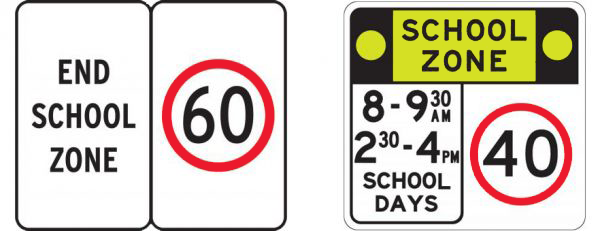
School bus stop zone
A school bus stop zone is the area between a ‘School bus stop zone’ sign and an ‘End school bus stop zone’ sign. This area is where school buses stop to drop off or pick up children.
If you’re driving in a school bus stop zone and see a bus with flashing lights on the top, you must not pass or overtake it in any direction at more than 40km/h while the lights are flashing.

Buses with flashing lights
At any time when you are travelling in the same direction as a bus with a ‘40 when lights flash’ sign on the back and the lights on top are flashing, you must not overtake it at more than 40km/h. This is because the bus is picking up or dropping off children who may be crossing or about to cross the road.
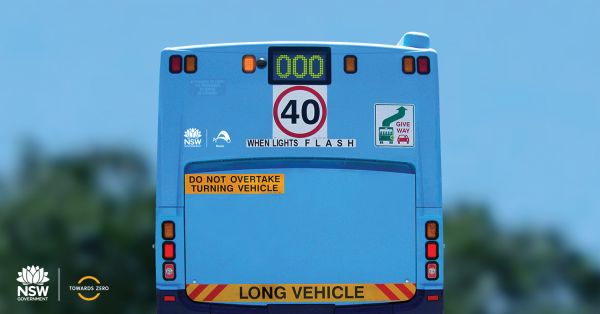
Road work speed limit signs
Roadwork signs alert you to the start and end of roadworks and the speed limit for that area. You must not go faster than the speed limit shown on the sign.
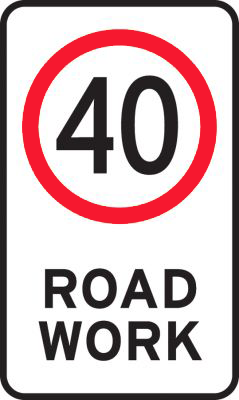
Areas without speed signs
Default speed limits apply on roads without speed limit signs or roads with an end speed limit sign.

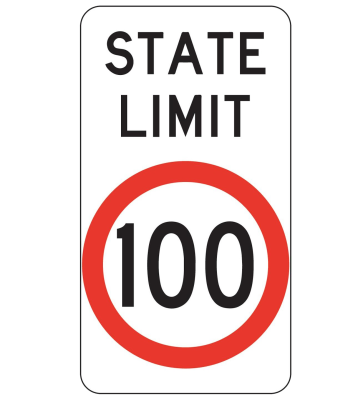
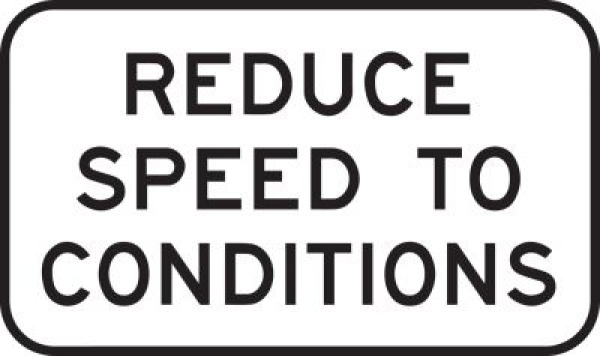
Advisory speed signs
Advisory speed signs are not regulatory signs. They show the recommended maximum speed to safely drive when there are hazards, such as curves, bends and crests.
The advisory speed is for average vehicles in good driving conditions. You should drive at a slower speed if the conditions are poor.
Advisory speed signs have a yellow background. An advisory speed sign is usually used with a warning sign.
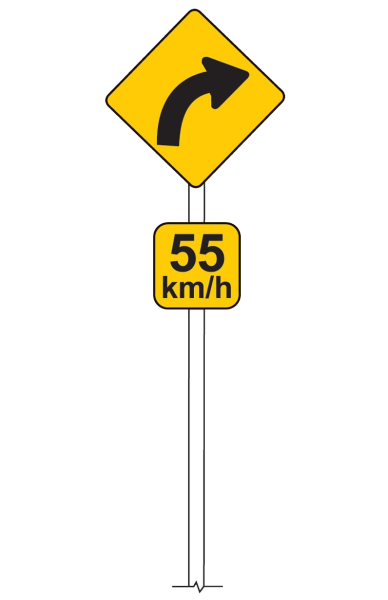
Drive to road conditions
Even if you’re driving at or below the speed limit, you may be driving too fast for road conditions such as curves, rain, heavy traffic or night-time. See Driving in poor conditions.
Speed cameras
Speed cameras are proven to change driver behaviour and reduce road trauma.
There are 4 types of speed cameras in NSW:
- Mobile speed cameras are moved around the road network and can detect speeding anywhere and any time.
- Red-light speed cameras capture both red-light running and speeding at high-risk intersections.
- Fixed speed cameras are in high-risk locations such as tunnels or areas with a history of severe crashes.
- Average speed cameras measure the average speed of heavy vehicles over long distances.
Play your part in keeping our community safe. Slow down to save lives.
See a list of Speed camera locations for NSW.